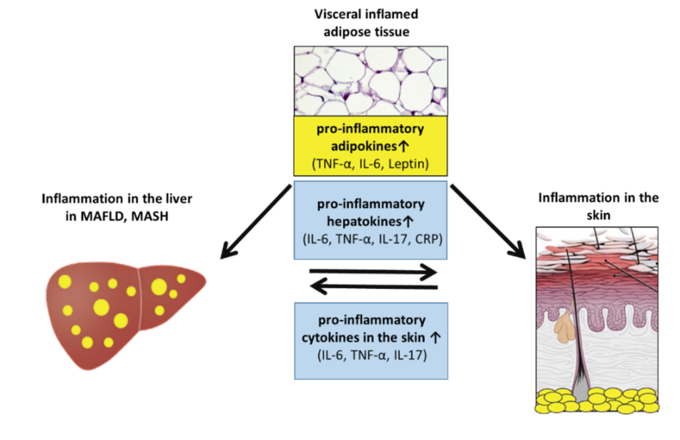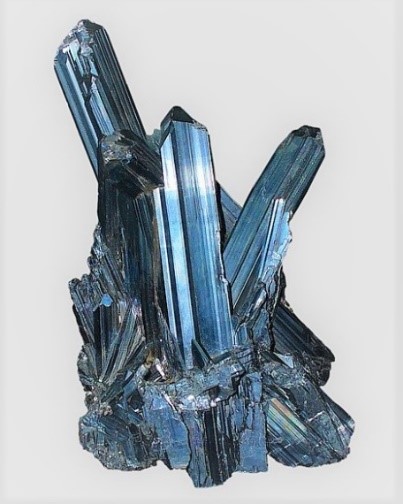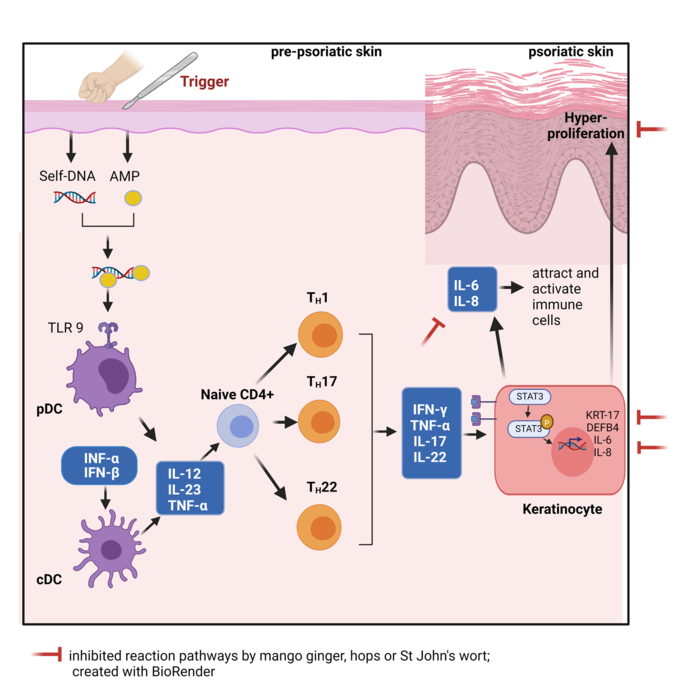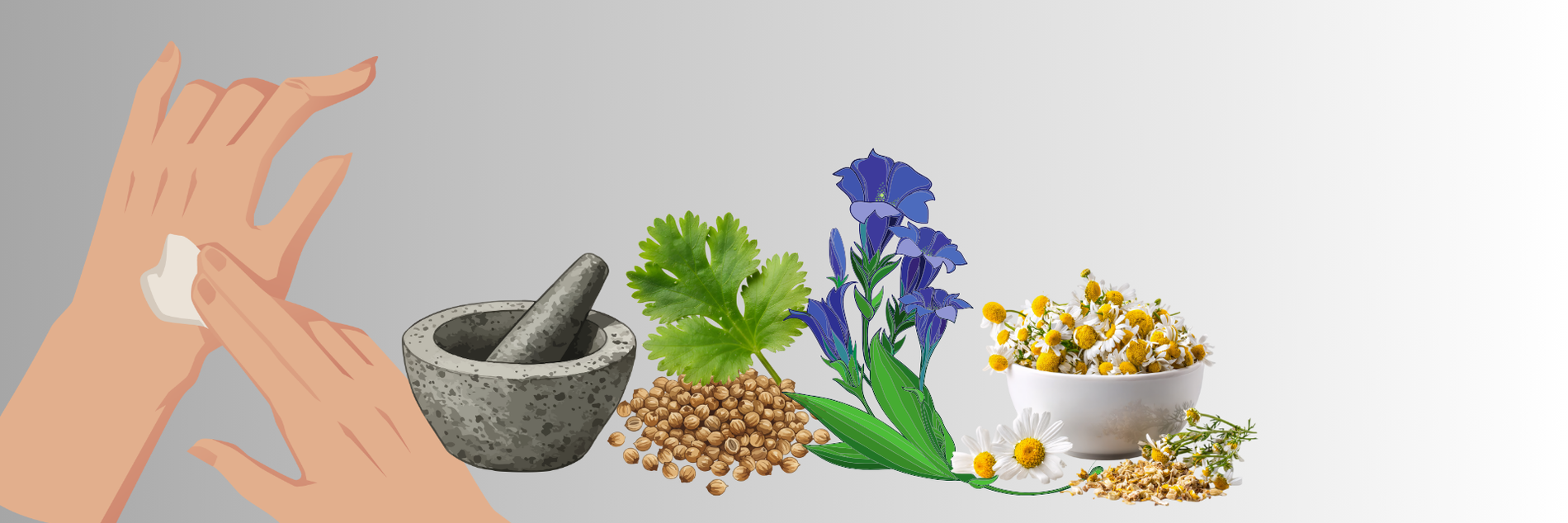skintegral® Natural Compound Research

Major Focus:
Research activities of skintegral™ are dedicated to investigating beneficial effect of plant extracts, minerals and solar light on the skin. Plant extracts contain a variety of natural compounds with therapeutic relevance, such as free radical scavenging, anti-inflammatory and antimicrobial effects. The dermatologic usability of most of these compounds is only partly explored.

Prof.Christoph M.Schmepp, MD, PhD
Biologist, Dermatologist
Phone: + 49 (0)761 270-67010
christoph.schempp@uniklinik-freiburg.de
ORCID: 0000-0002-1372-998X
CV
|
Current position |
Head of the photodermatology unit, head of the inpatient department - focus inflammation, head of the research centre skintegral |
|
2005 |
Appointed Professor of Dermatology, University of Freiburg |
|
2000 |
Certificate in allergologie in dermatology and allergologie, University of Freiburg |
|
1994 |
State examination in medicine, MD doctoral thesis in dermatology, Free University of Berlin, Germany |
|
1987 |
PhD degree in biology and pharmacy, University of Tübingen, Germany |

Prof.Ute Wölfle, PhD
Biologist, Dermatologist
Phone: + 49 (0)761 270-68250
E-Mail:
ORCID: 0000-0003-0093-560X
CV
|
Current position (2008 ongoing) |
Postdoctoral studies, since 2015 lab leader at the research group skintegral, Department of Dermatology, University Medical Center Freiburg |
|
2023 |
Appointed Professor of Experimental Dermatology, University of Freiburg |
|
2006-2007 |
Product Scientist at the Life Science Group of Sysmex, Norderstedt, Germany |
|
1999-2006 |
PhD dissertation and 3 year postdoctoral studies at the Institute of Tumor Biology, UKE Hamburg, Head: Prof. Klaus Pantel |
|
1993-1999 |
Biological studies at the university of Freiburg and performing the Diploma thesis at the Max Planck Institute for Immunology, Freiburg, Group Leader: Prof. Dr. Ursula Klingmüller, |
Team
|
Doctoral/Master students |
|
|
Zita Hurth (cand. MD) |
|
|
Marie-Luise Faber (cand. MD) |
|
|
Technician |
|
|
Birgit Haarhaus, MTA |
|
|
Alumni |
|
|
2025 |
Christina Maria Sager |
|
2024 |
Maximilian Becker |
|
2024 |
Lucia Ratzke |
|
2020 |
Natalja Weber |
|
2019 |
Deborah Gregersen |
|
2018 |
Jasmin Seiwerth |
|
2017 |
Lea Zimmermann |
|
2017 |
Georgia Tasiopoulou |
Key Puclications
|
2022 |
Hurth Z, Faber ML, Gendrisch F, Holzer M, Haarhaus B, Cawelius A, Schwabe K, Schempp CM, Wölfle U. The Anti-Inflammatory Effect of Humulus lupulus Extract In Vivo Depends on the Galenic System of the Topical Formulation. Pharmaceuticals. 2022, doi: 10.3390/ph15030350 |
|
2018 |
Kapp, F.G., Perlin, J.R., Hagedorn, E.J., Gansner, J.M., Schwarz, D.E., O’Connell, L.A., Johnson, N.S., Amemiya, C., Fisher, D.E., Wölfle, U., Trompouki, E., Niemeyer, C.M., Driever, W., Zon, L.I., 2018. Protection from UV light is an evolutionarily conserved feature of the haematopoietic niche. Nature. 2018, doi: 10.1038/s41586-018-0213-0 |
|
2015 |
Wölfle, U., Elsholz, F.A., Kersten, A., Haarhaus, B., Müller, W.E., Schempp, C.M., 2015. Expression and functional activity of the bitter taste receptors TAS2R1 and TAS2R38 in human keratinocytes. Skin Pharmacology and Physiology. 2015, doi: 10.1159/000367631 |
|
2015 |
Wölfle, U., Haarhaus, B., Schempp, C.M., 2015c. Amarogentin Displays Immunomodulatory Effects in Human Mast Cells and Keratinocytes. Mediators Inflamm. 2015, doi: 10.1155/2015/630128 |
|
2011 |
Wölfle, U., Esser, P.R., Simon-Haarhaus, B., Martin, S.F., Lademann, J., Schempp, C.M., 2011. UVB-induced DNA damage, generation of reactive oxygen species, and inflammation are effectively attenuated by the flavonoid luteolin in vitro and in vivo. Free Radical Biology and Medicine. 2011, doi:10.1016/j.freeradbiomed.2011.01.027 |
Funding
|
Wilhelm Doerenkamp Foundation, Sanddorf Foundation and Software AG Foundation, Christophorus Foundation, DAMUS-DONATA e.V., Dr. Hauschka Foundation, Mahle Foundation, Rudolf Steiner Fund |
Background
Research projectsInfluencing the interaction of psoriasis keratinocytes and fatty liver cells by liver remedies of the integrative medicine (PSORI-HEP study)
Funded by the Sanddorf Foundation and Software AG Foundation
Psoriasis is a noncommunicable, partly genetically determined, chronic inflammatory skin disease associated with several comorbidities. One of the most common comorbiditiy is the metabolic syndrome that include obesity, diabetes mellitus, elevated liver enzymes and : Metabolic dysfunction-associated fatty liver disease (MAFLD). The research project investigates the association of psoriasis with MAFLD using several experimental models. The main question is whether treatment of fatty liver cells with liver therapeutics or complex gastrointestinal-liver-bile remedies can improve the expression of psoriasis inflammation.

Network between adipose tissue, liver and skin (modified from Mantovani et al. IJMS 2016; Heitmann et al. JDDG, 2021)
MAFLD: metabolic dysfunction-associated fatty liver disease; MASH: metabolic dysfunction-associated steatohepatitis

Antimonite crystal (Photo: State Museum of Natural History Karlsruhe)
Antimony (Stibium, Sb) and Antimonite (Stibnite, Sb2S3) are metalloids with anti-infective and immunosuppressive properties. They have been used as remedies for a long time, but in recent times they are only used restrictively to treat certain parasitoses due to their toxicity. Antimony and antimonite are also used in anthroposophic medicine in diluted nontoxic preparations. In this research project, dose-response relationships and active principles of antimony, antimonite and the antimony compound Tartarus stibiatus were investigated on psoriasis-like keratinocytes. It was shown that antimony / antimonite - but especially Tartarus stibiatus - causes a reduction in keratinocyte proliferation and a reduction in psoriatic inflammation.

Effect of botanical compounds on psoriasis keratinocytes in vitro and in vivo
Funded by the Wilhelm Doerenkamp Foundation, Chur (Switzerland)
In this project, the anti-psoriatic effect of traditionally used and novel botanical compounds was investigated. Of particular interest are active plant compounds from Centella asiatica (asiatic pennywort with madecassoids and asiaticosides), Mahonia aquifolium (mahonia with berberine), Curcuma amada (mango ginger with the diterpenoid LDD) and Whrightia tinctoria (sweet indraja with triterpenes and sterols), as they have been used in Ayurvedic and traditional Chinese medicine for thousands of years to treat skin diseases. In addition, the traditional medicinal plants from occidental monastic medicine Hypericum perforatum (St. John's wort with hyperforin) and Humulus lupulus (hops with humulone and lupulone) could be effective. After screening the botanical compounds for anti-inflammatory and anti-proliferative effects, hops and St. John's wort were found to be particularly promising botanical compounds in psoriasis models in vitro and ex vivo.

Physiological role of bitter taste receptors in the skin
In recent years, it has been discovered that certain taste receptors, the bitter taste receptors (TAS2Rs), are not only present on the tongue and upper gastrointestinal tract, but also on the bronchi of the lung. The binding of bitter substances to TA2Rs in the lung induces bronchodilation. This may be of therapeutic use in the treatment of asthma bronchiale. The research unit skintegral could show that the skin also possesses bitter taste receptors.
Plant derived bitter agents from gentian (amarogentin) or willow bark (salicin) bind to these bitter taste receptors and induce calcium influx into keratinocytes. This leads to the synthesis of lipids and proteins that are crucial for the formation of the skin barrier (e.g. keratins, filaggrin). Bitter substances thus stimulate the skin's metabolism. In addition, they have anti-allergic effects.
The efficacy and skin tolerability of natural compounds in topical preparations depends on the liberation and penetration of the compounds from the vehicle, a scientific field covered by dermopharmacy. Natural substances used in dermatology should not have any sensitizing or phototoxic potential. To address this, various cell culture models and molecular methods are established in our laboratory. Clinically, the substances are investigated in skin tests such as the patch test or the ultraviolet erythema test. The spectrum of methods includes bioengeneering methods such as the measurement of skin hydration, transepidermal water loss, skin perfusion and sebumetry.
The integrative approach of our research area is highlighted by interdisciplinary research projects with phytotherapy, allergology, biology, pharmacy and complementary medicine.
In particular, there are collaborations with:
Prof. Dr. rer. nat. Stefan Martin und Dr. rer. nat. Philipp Esser, Allergy Research Group (ARG), University Medical Center, Freiburg
Prof. Dr. med Tobias Böttler; Dr. Giuseppe Rusignuolo, Department of Medicine II, University Medical Center, Freiburg
Dr. rer. nat. Karl Quirin und Anja Cawelius, Naturextrakte GmbH, Rehlingen
Prof. Dr. med. Roman Huber, Center for Complementary Medicine, University Medical Center, Freiburg
PD Dr. Dr. rer. nat. Franck A. Ditengou , Bio Imaging Core Light Microscopy (BiMiC), University Medical Center Freiburg
Prof. Dr. rer. nat. Kateřina Vávrová, Faculty of Pharmacy Hradec Kralove, Charles University, CZE
Dr. rer. nat. Martin Holzer Department of Pharmaceutical Technology and Biopharmacy, University Freiburg
Prof. Dr. rer. nat. Ralf Weißenkirchen, Institute of Molecular Pathobiochemistry, RWTH University Hospital Aachen
Prof. Dr. med Martin Wabitsch, Division of Paediatric Endocrinology and Diabetes, University Medical Centre, Ulm
Dr. rer. nat. Kay Schwabe, Beauty Science Intelligent GmbH, Langenhagen
Prof. Dr. Dr.-Ing. Jürgen Lademann und Prof. Dr. rer. nat. Martina Meinke, Center of Experimental and Applied Cutaneaous Physiology, Charité Berlin

